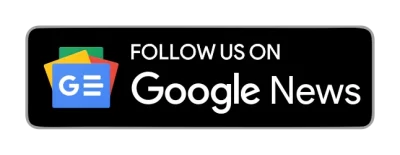3 Body Problem with Science: How Much of the Netflix Series Has a Real Scientific Basis?
Do nanofibers exist? What the hell is a Sophon? Like the novel by Liu Cixin that it adapts, the science fiction series embeds its most astonishing elements in the world of astrophysics and quantum mechanics.
Science fiction as a narrative genre always implies a dialogue between the two concepts that make up its name: the real and the imagined. Although the latter strives for speculation and the creation of worlds or technologies, it must be based on a scientific basis that keeps it clinging to limits without which it would enter the realm of fantasy. 3 Body Problem, the novel by Liu Cixin that adapts the Netflix series directed by David Benioff, DB Weiss (Game of Thrones), and Alexander Woo (The Terror), follows the dictates of hard science fiction. It focuses on the scientific aspects that support its proposals, trying not to distance itself too far from what is possible in terms of advances in technology and knowledge… without giving up the imagination in some respects more than in others. How much science is there in the 3 Body Problem? We are going to try to unravel the scientific basis that hides behind some of the most striking elements seen in the Netflix series, delving into them with spoilers for the entire first season.

What is the 3 Body Problem?
Liu Cixin titled the first novel in this trilogy after a classic problem in celestial mechanics, the study of the movements of astronomical objects and gravitational effects. Although with Newton’s law of universal gravitation, it is possible to accurately predict the Earth’s movement around the Sun, when three (or more) celestial bodies exert force on each other at the same time the matter becomes complicated and their orbits become chaotic. It is the problem that the San-Ti, the extraterrestrial species from the 3 Body Problem that is heading to colonize Earth, deal with. As the human protagonists learn as they overcome the levels of a highly advanced virtual reality video game, the Santi-Ti civilization is destined for periodic extinction due to the uninhabitability of their home planet, located in a system of three Suns.
The interaction of the different gravitational forces of these three stars is extremely difficult to stabilize or predict (we are still deciding which of the last 12,000 solutions is the most appropriate), hence the gravitational chaos that causes all series of catastrophes in the Tresolarian population shortly that have been able to thrive during an era of stability: dehydration, frost, scorching, even being blown up. Hence the solution adopted: emigrate to another, better planet.
Where Does the Countdown That Auggie Sees Come From?
At the beginning of the 3 Body Problem, we discover that the international scientific community is being shaken by a series of suicides of its greatest minds. Somehow, the phenomenon seems to be related to a kind of countdown that drives those who see it to despair and madness. Auggie Salzar, a brilliant nanotechnology expert played by Eiza Gonzalez, begins to perceive it in her field of vision. He soon senses that the countdown marks a point of no return in his pioneering research into nanofibers, a technology so advanced that it could lead to the destruction of the planet. Or rather, that’s what the San-Ti want you to believe since their purpose is to stop humanity’s technological progress to easily conquer us when they arrive on Earth in 400 years. Hence, they have driven the scientific community crazy and altered its certainties.
That’s all very well, but how did they do it? That’s where one of the ci-fi aces that Cixin keeps up his sleeve comes into play without going into much explanation: Sophons. We will explain them later, but as far as Auggie’s countdown is concerned, it is supposed to be an optical illusion created by the rapid movement of the Sophon, at the speed of light, creating those numbers that only she can see. Do you need a deeper explanation? Netflix itself has turned to a physics professor, Dr. Matt Kenzie, to theorize that what happens in Auggie’s eyes is a kind of Cherenkov radiation in the aqueous humor of the eye: when the Sophon passes through there at high speed, its electromagnetic radiation would form a front of shock waves inside the eyes that could be interpreted as the countdown numbers that the protagonist sees.
What is a Sophon? How Does it Work?
Ok, we come to the most fanciful (or, rather, advanced) element of the 3 Body Problem catalog. According to the AI with which the San-Ti humans communicate within the virtual reality game, Trisolarian technology has been able to create supercomputers the size of a proton. As? It seems considerably complicated: it consists of unfolding a proton in various layers beyond three dimensions until expanding it to a planetary-scale size on which to place a powerful computer, fold it all back to its original subatomic size, and send it to Earth to act. as an effective, completely imperceptible espionage machine. A multidimensional origami task (a bit like having a paper fortune teller that you can expand to the size of a circus tent and then fold back in your hand) that even Trisolarians have only been able to do a limited number of times: They have two emitting sophons that they send to us, capable of moving from one side to the other at the speed of light, and two receiving sophons.
Do Nanofibers Exist?

Although Auggie’s research has led to nanotechnology in the 3 Body Problem being at a much more advanced point than it is today (with chilling results, as can be seen in episode 5), the manufacture of nanofibers has been booming for decades. It is considered one of the materials of the future, with different advances in the fields of biomedicine, tissue engineering, construction, the automotive industry, aerospace, and even cosmetics. Of course, their small size (one billionth of a meter), as you can imagine, represents a considerable challenge when it comes to manufacturing them and scaling their production, but it is a field of industrial research in constant development. As unstoppable as a ship moving through the Panama Canal.






